Android Tips
Tip #692
April 14, 2025
Bring back the Home button when moving the Address Bar to the bottom in Vivaldi on Android.
When you move the Address and Tab Bars to the bottom edge of the screen, the Navigation Bar, together with some useful buttons, will be hidden. For example, the one taking you back to the Start Page. Luckily, there’s a setting in Vivaldi on Android that you can toggle to bring it back.
To add a Home button to the Address Bar:
- Go to Settings > Appearance & Theme.
- Enable “Show Start Page Icon in Address Bar”.
If you want to open a website instead of the Start Page when tapping on the Home button (and New Tab button), go to Settings > General > Homepage to set the web page link.

Tip #689
April 9, 2025
Hide seldom used buttons on Vivaldi’s Start Page on your mobile for a cleaner look.
While customizing the appearance of the Start Page is fun, you probably don’t do it very often. The same goes for manually adding new Speed Dial bookmarks. If that’s the case, feel free to hide one or both of the buttons in Vivaldi on Android and iOS and use alternative routes on occasions you do need to access these features.
To hide the buttons from the Start Page:
- Tap on the “Customize” button on the Start Page.
Alternatively, go to Settings > Start Page. - Toggle off “Customize Start Page Button” and/or “Show Add Button”.
When these buttons have been hidden, tap on the 3 dot menu in the top right corner of the Start Page and select “Customize Start Page” to access customization settings. To add new Speed Dial bookmarks, select the right Speed Dial folder when adding an open web page as a bookmark or add one manually in the Bookmarks Panel.
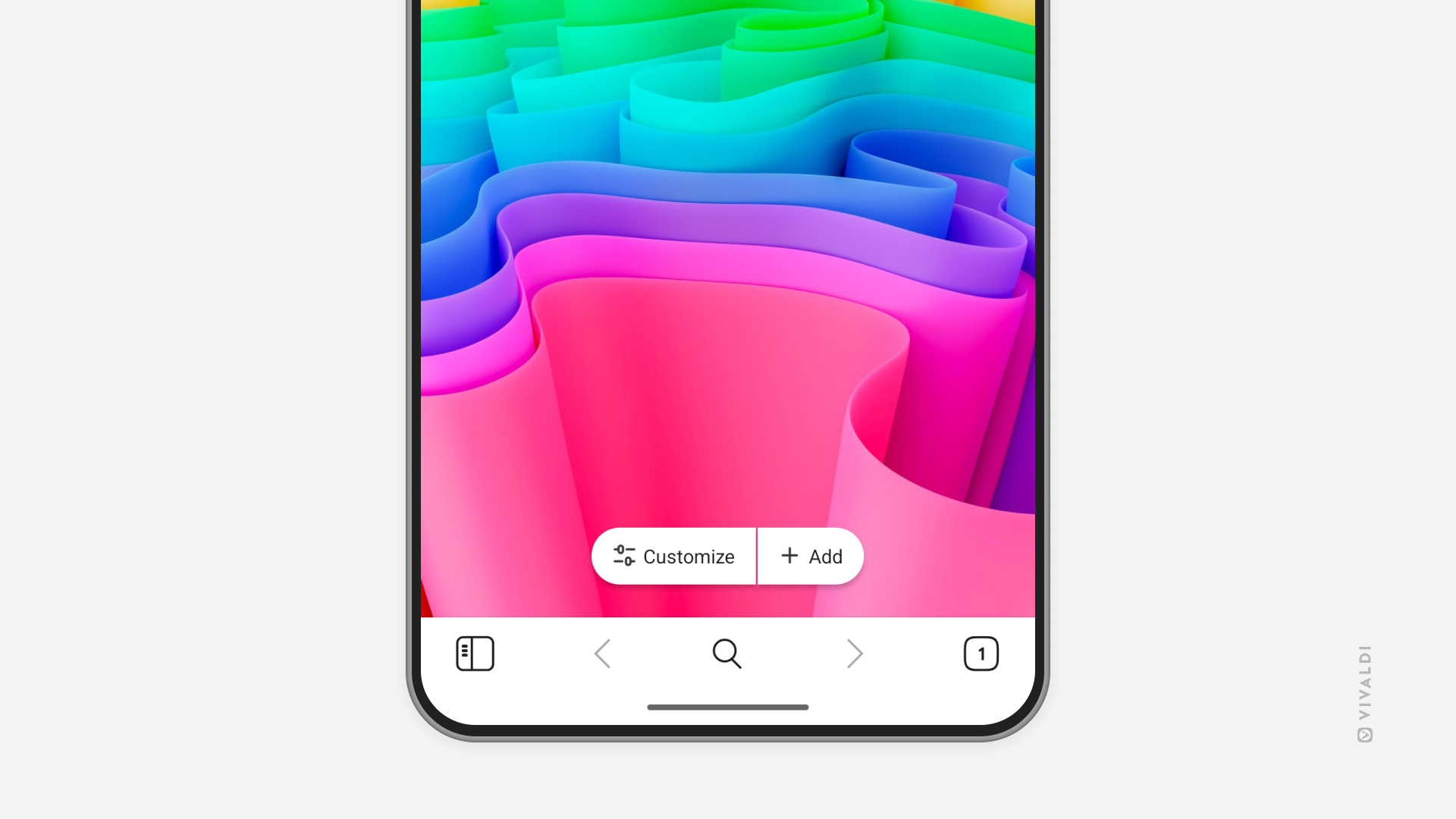
Tip #678
March 25, 2025
Give your notes on mobile distinct names.
Keep your Notes in Vivaldi on Android and iOS neatly organized by adding titles to them. That way you don’t have to waste time looking for a note by just seeing the first couple of words of your notes.
To rename a note in Vivaldi on Android:
- Long-press on a note in the Notes list to select it.
- Tap on the “Edit” button at the top of the Notes Panel.
- Rename the note.
- Tap on “Save”.
To rename a note in Vivaldi on iOS:
- Long-press on a note in the Notes list.
- Select “Rename Title” from the context menu.
- Rename the note.
- Tap on “OK”.
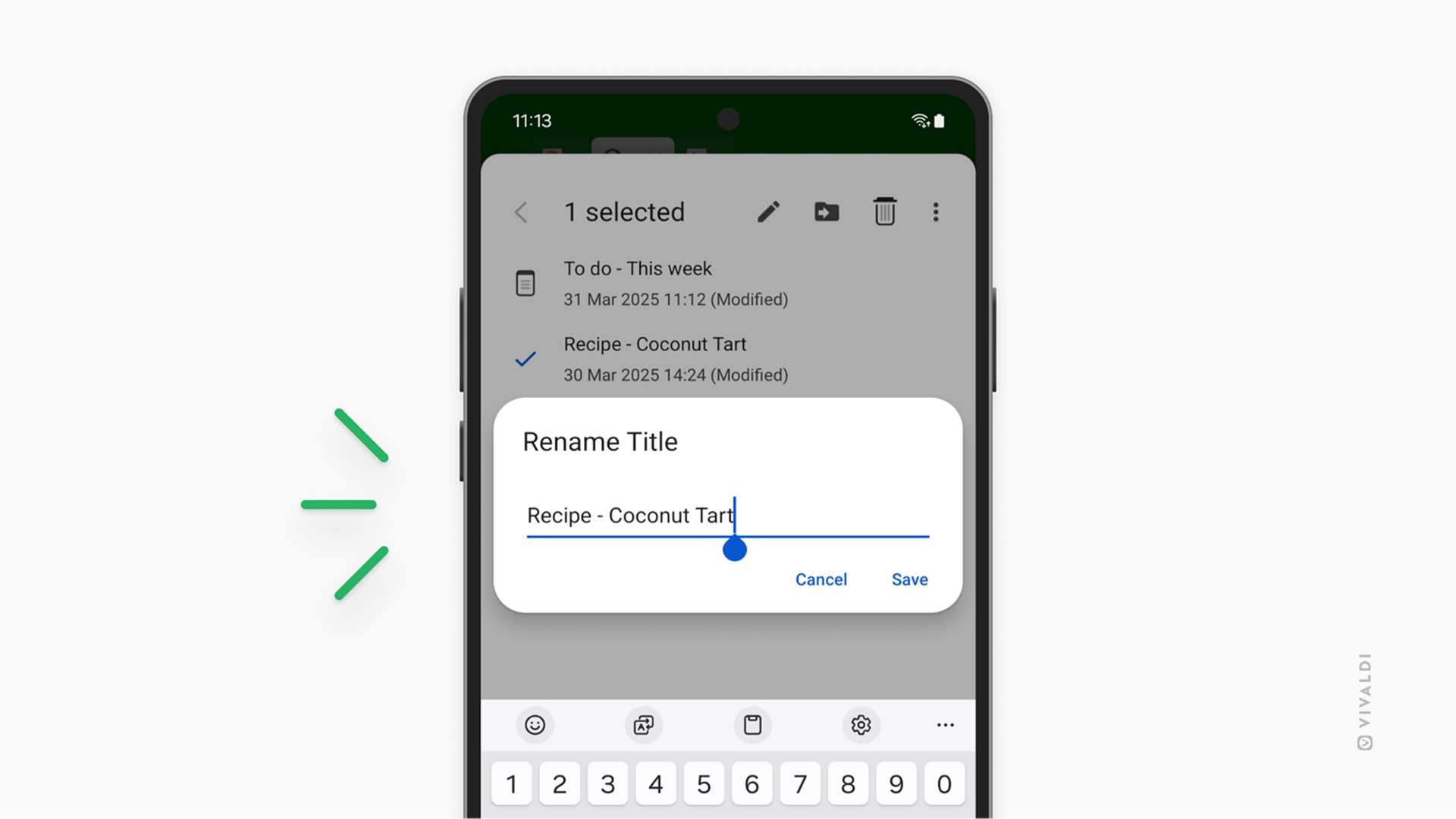
Tip #676
March 21, 2025
Look up recent translations in the Translate Panel.
Whenever you translate selected text from a web page or something you’ve entered in the Translate Panel in Vivaldi on Android and iOS, the original text and the translation are saved in the Translate Panel’s history.
To view Translation History in Vivaldi on Android:
- Open the Translate Panel.
- At the bottom of the panel, tap on “Show Translate History”.
To view Translation History in Vivaldi on iOS:
- Open the Translate Panel.
- Near the bottom of the panel, tap the clock button to see previous translations.

Tip #675
March 20, 2025
Hide the Navigation Bar in Vivaldi on Android.
When you move the Tab and Address Bars to the bottom the Navigation Bar disappears and you have more screen space. If you prefer to keep the Tab and Address Bars on top there’s still a way to hide the Navigation Bar.
To hide the Navigation Bar:
- Go to Settings > Appearance & Theme.
- Disable “Show Navigation Bar”.
When hidden, the Tab Switcher button is moved to the Address Bar and other features are available from the main Vivaldi menu.
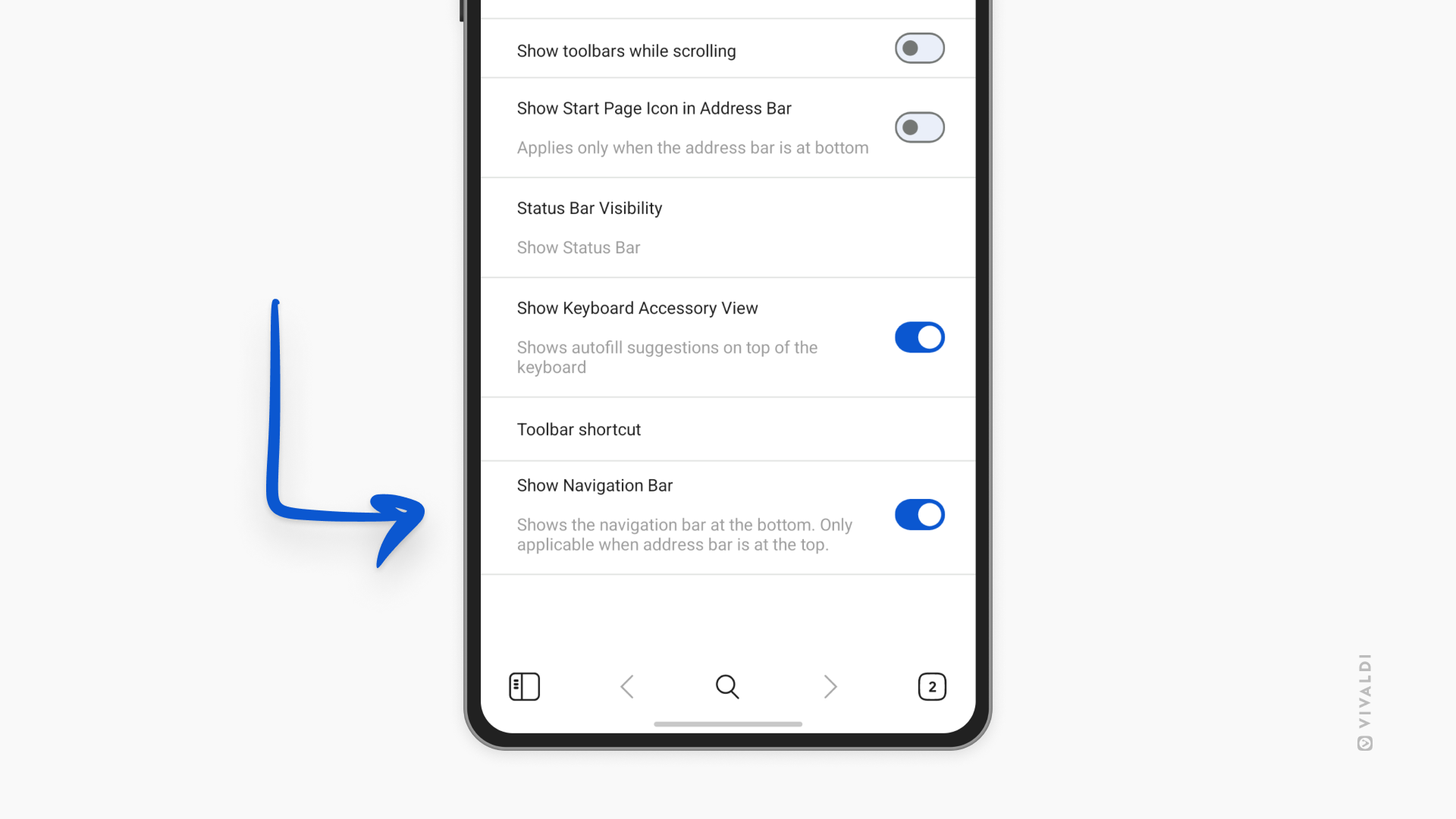
Tip #664
March 5, 2025
Choose which Speed Dial Group to display when going to the Start Page on mobile.
We all have our preferred workflows and it’s great when the tools you use are able to adapt to that workflow. That’s why in Vivaldi on Android and iOS you can choose what gets shown to you when you open the Start Page. Is it the selection of your most visited sites (bookmarked or not), the first group with your most important Speed Dials, or the one you viewed most recently?
To select your preferred Start Page opening view:
- Go to Settings > Start Page > Reopen Start Page with.
- Choose between:
- First Group,
- Top Sites,
- Last Visited Group.
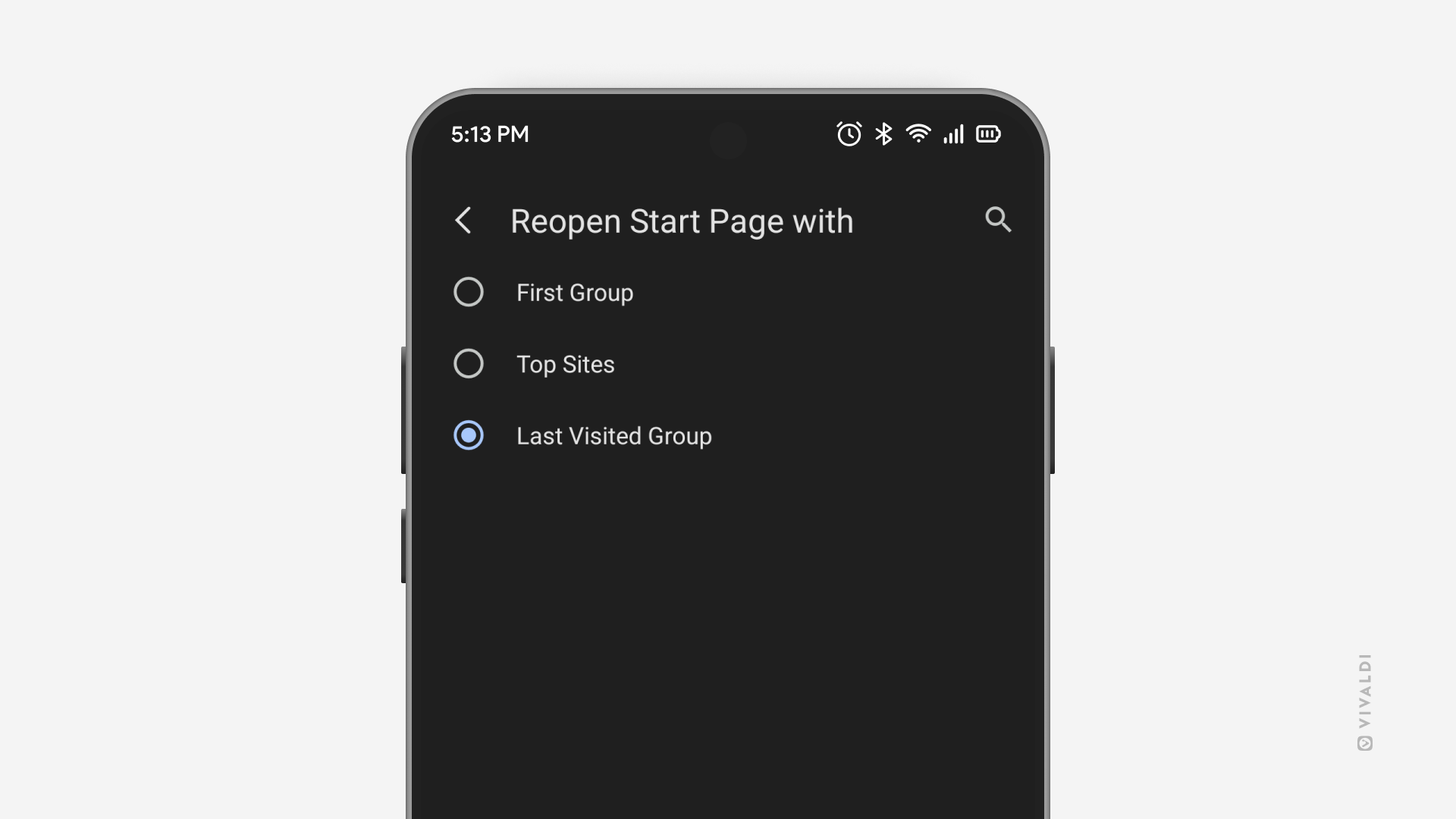
Tip #660
February 27, 2025
Clear the list of recently closed tabs in Vivaldi on Android’s Tab Switcher.
In case you don’t want to delete your full browsing history on Android, but still want to do a little cleanup in the Tab Switcher, after closing irrelevant tabs, you can also remove them from the Closed Tabs list.
To clean up your Closed Tabs:
- Open the Tab Switcher.
- Go to the Closed Tabs page.
- Long-press on an entry.
- Select “Remove all”.

Tip #656
February 20, 2025
Find open tabs on mobile instantly with Tab Switcher’s search function.
If you have ever struggled to locate a specific tab, this feature will be a game changer. In the Tab Switcher, you can search through all your open tabs, and should the tab you’re looking for no longer be open you can continue to search for the page on the web.
To search for an open tab:
- Open the Tab Switcher.
- Tap on the Search button in the top right corner on Android and the top left on iOS.
- Start typing the tab’s title or URL.
- Tap on the result to open the tab.
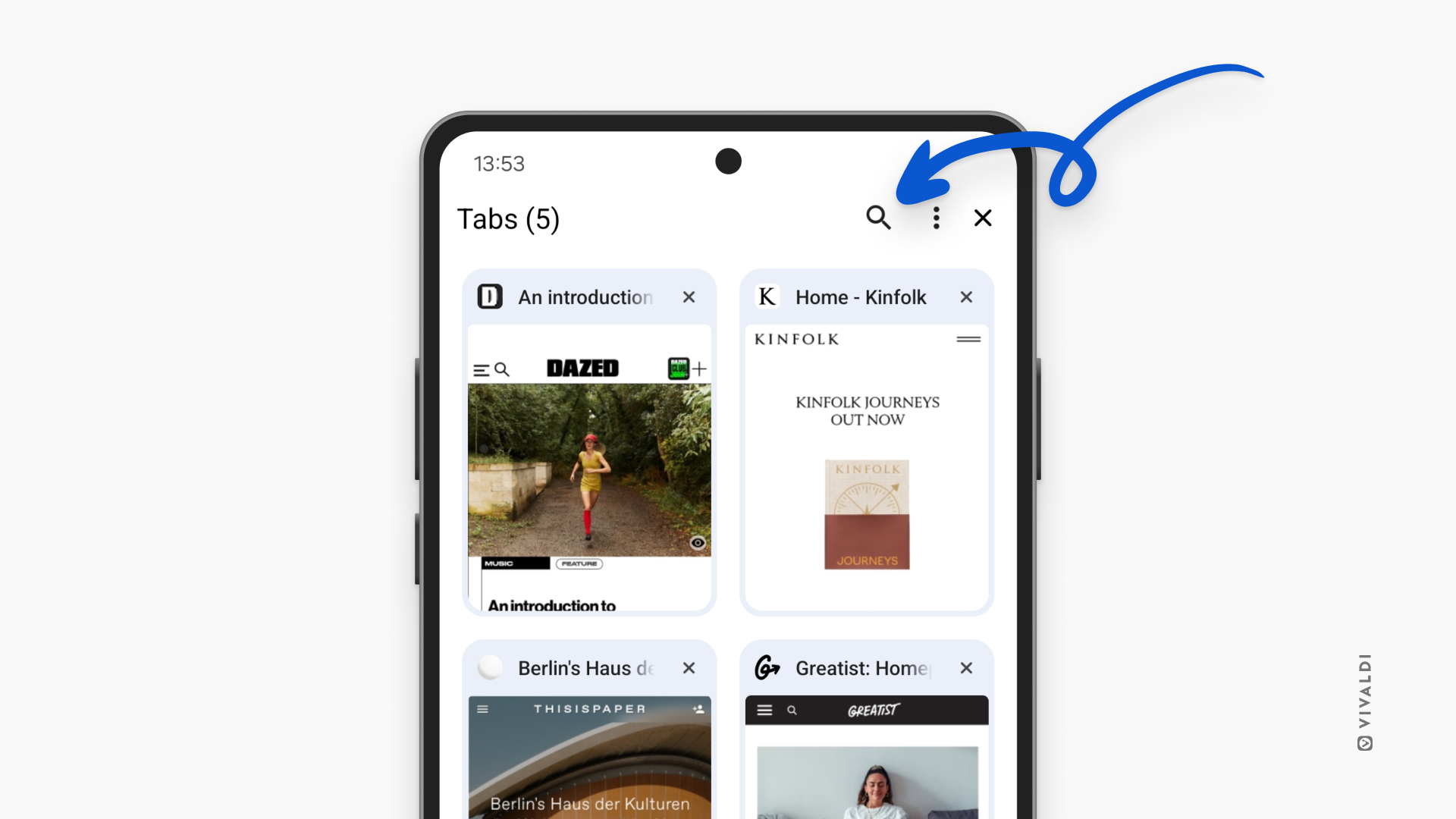
Tip #651
February 13, 2025
Make use of the extra screen real estate on your Android tablet to tile web pages.
While tiling is possible on your Android phone, the small screen makes it difficult to see the content of both tiled web pages. But tablets’ screens fit a lot more, so tiling web pages there makes a lot more sense.
To tile web pages on Android, they need to be open in separate windows. To tile your current Vivaldi window with a new window, open the main Vivaldi menu and select “New Window”. The two Vivaldi windows will be tiled automatically.
To tile Vivaldi with another window you already have open or with a different app:
- Open the tablet’s app switcher menu.
- Tap on Vivaldi’s logo and select “Open in split screen view”.
- Browse through your apps and tap on the one you want to tile Vivaldi with.

Tip #645
February 5, 2025
Move from computer to mobile and vice versa in a breeze by sending tabs from one device to the other.
When you have Sync enabled in Vivaldi, you can view all tabs you have open in other Vivaldi instances from a button on the Tab Bar and in the Windows Panel on desktop, and from the Tab Switcher on mobile. If there’s a specific web page you’d like to access from a different device immediately, you can use the Send Tab to Device feature.
To send a tab from desktop:
- Right-click on the tab on the Tab Bar or on an empty area on the page.
- Select “Send to Your Devices”.
- Choose to which synced device you want to send the tab to.
To open a received tab on desktop:
- Click on the Synced Tabs button on the far side of the Tab Bar.
- Click on “From [device name]: [page link]”.
To send a tab from mobile:
- Open the Vivaldi menu > Share.
- Select “Send to Your Devices”.
- Choose to which synced device you want to send the tab to.
To open a received tab on mobile:
- After sending the tab from the other device, wait for a notification.
- Tap on the notification to open the page in a new tab.
If you don’t receive sent tabs, check that you’re logged in to Sync and that syncing is active. Also, check from your phone’s settings that Vivaldi is allowed to send you notifications.

Tip #642
January 31, 2025
Enable Reader View to focus on the important things.
Reader View in Vivaldi on Android removes all distracting elements from the web page, allowing you to focus on reading the article in peace.
To start using Reader View, first enable it from Settings > Content Settings > Accessibility > Reader View for Web Pages.
To toggle Reader View on and off on pages with more text content:
- Open the main Vivaldi menu.
- Select “Reader View” / “Exit Reader View”.
If it’s a feature you use often, customize the menu for easier access in Settings > Appearance & Theme > Main Menu Layout > Menu Settings > Customize layout and move Reader View to the top 5.
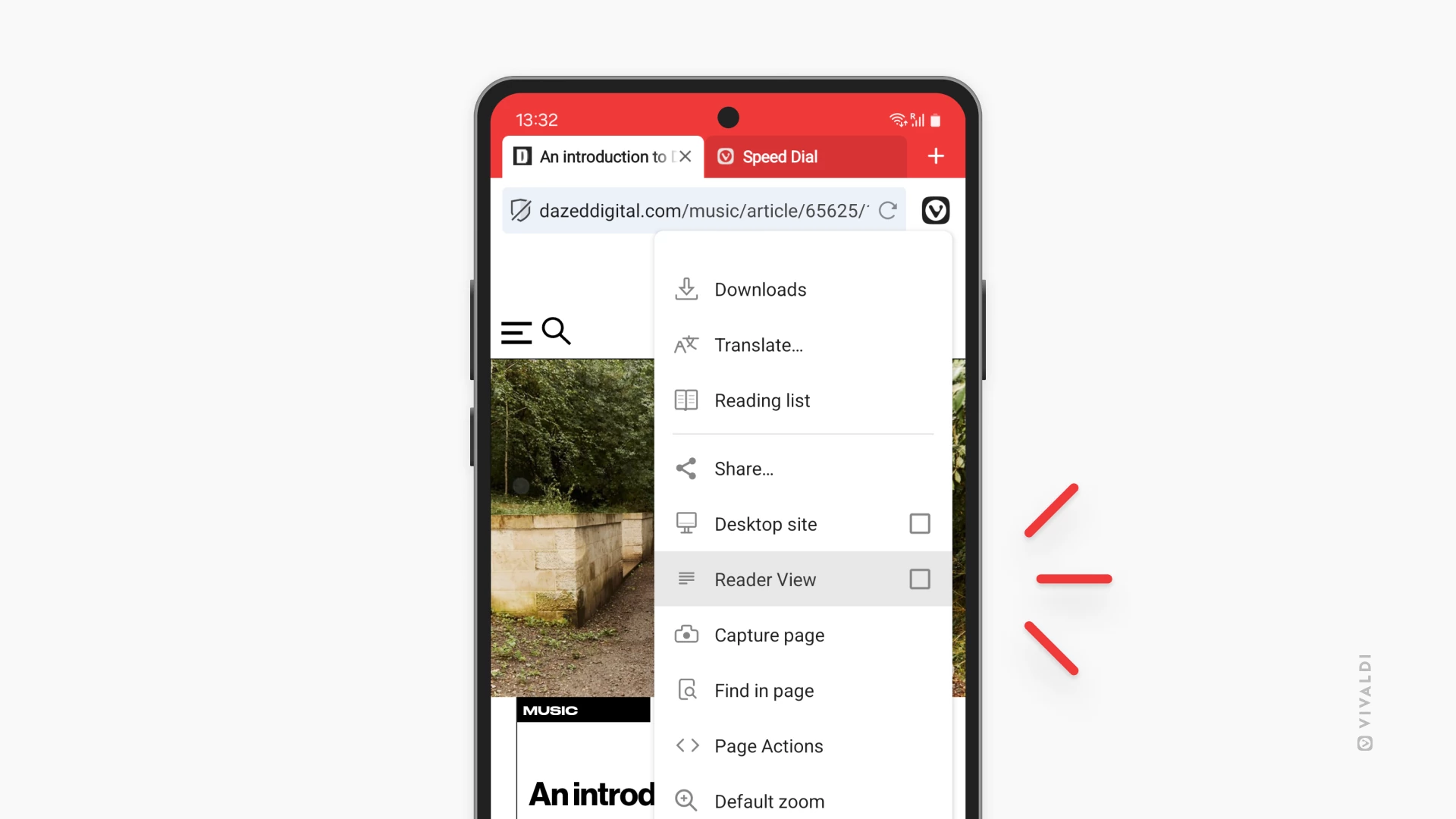
Tip #633
January 20, 2025
Search for a setting in Vivaldi on Android instead of skimming through the various categories.
Vivaldi on Android has an abundance settings, which allow you to customize the appearance and functionality of the browser to your liking. The downside is that it can make finding the correct setting a bit time consuming, but we have a solution for that too – Search.
To search for a setting:
- Go to the Vivaldi menu > Settings.
- Tap on the search icon in the top right corner.
- Enter the search term.
